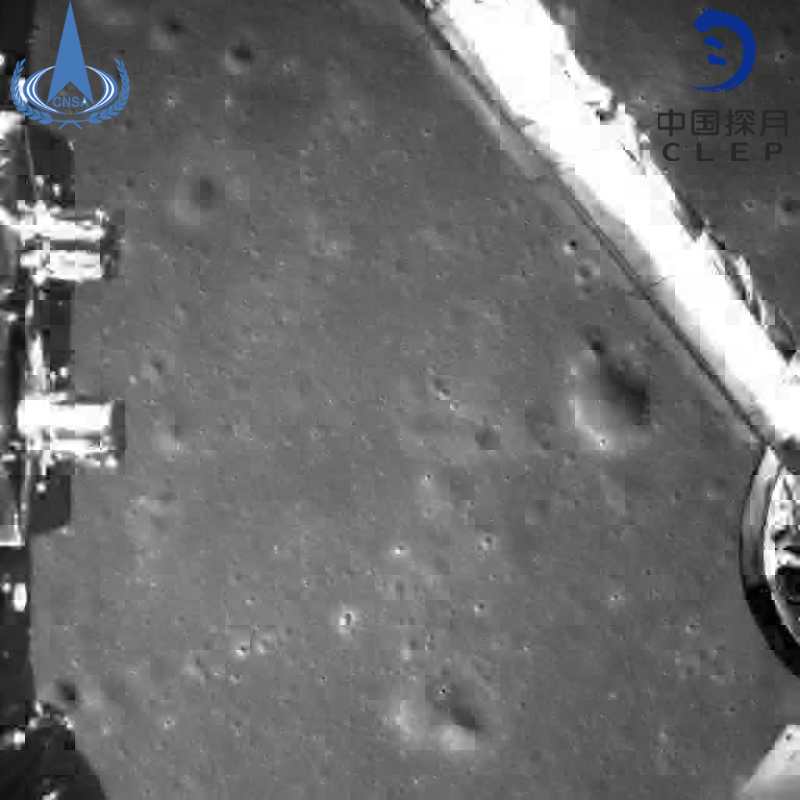(Video source: CCTV)
China's Chang'e-4 probe touched down on the far side of the moon at 10:26 am Thursday, becoming the first spacecraft soft-landing on the moon's uncharted side never visible from Earth, according to China National Space Administration.

(Photo: People's Daily app)
Chang'e-4 blasted off from Earth on December 8 at the Xichang Satellite Launch Center in Southwest China's Sichuan Province and flew for 26 days before touching down on the moon's hidden hemisphere.
The Chang'e-4's relative velocity to the moon was lowered from 1.7 km per second to close to zero, and the probe's attitude was adjusted at about 6 to 8 km above the lunar surface.
At 100 meters up, the probe hovered to identify obstacles and measured the slopes on the surface. After avoiding the obstacles, it selected a relatively flat area and descended vertically and slowly.
The probe then landed in the Von Karman Crater in the South Pole-Aitken Basin.
"Landing on the far side of the moon is more risky than landing on the near side. The rugged terrain on the far side has raised many problems," said Sun Zezhou, chief designer of Chang'e-4 probe, from CAST.
"But solving those problems might help lay the foundation for future space exploration. High-precision landing is a necessity for further exploring the moon and asteroids. We hope to be able to reach the whole moon and even the whole solar system," Sun said.
The moon is tidally locked to Earth, rotating at the same rate that it orbits the planet. Therefore, only one side of the moon is seen from Earth, leaving the far side a mystery before the age of spacecraft.
The probe will conduct low-frequency radio astronomical observation, survey the terrain and landforms, detect the mineral composition and shallow lunar surface structure and measure the neutron radiation and neutral atoms to study the environment on the far side of the moon, according to CNSA.


(Photos: China National Space Administration)
Chang'e-4's low-frequency radio astronomical observation on the moon's far side will fill many gaps in astronomical observation.
The probe also took six live species - cotton, rapeseed, potato, arabidopsis, fruit fly and yeast - to the lifeless environment to form a mini biosphere, which is expected to produce the first flower on the moon.
The probe will allow scientists to conduct more accurate deep space observation, taking advantage of the fact that the far side never faces the Earth and is free from radio interference.
(With inputs from Xinhua)


